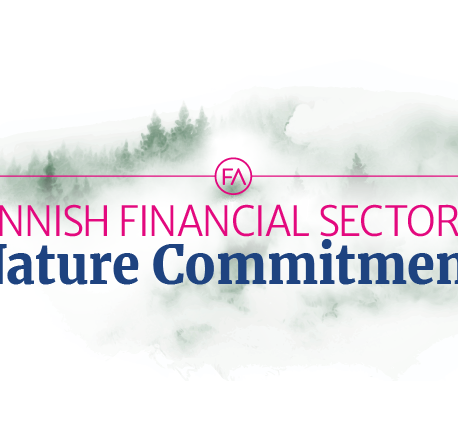
- As an insurer of Finnish wind turbines, LocalTapiola is well aware that the construction and use of these massive installations in Arctic conditions involves many risks.
- This article launches an article series showcasing Finance Finland member organisations’ concrete actions to promote the green transition.
“It’s said that lightning never strikes the same place twice. Well, lightning can easily strike the same wind turbine not just twice but dozens of times”, LocalTapiola’s Head of Property and Engineering Underwriting Lari-Pekka Kyllönen says.
The business of insuring wind turbines has required Kyllönen and his team to study up on many new areas. One of the things they have observed along the way is that some wind turbines have insufficient lightning protection.
“Sometimes the poor state of affairs has come as a surprise to the wind power operator as well”, says Kyllönen.
If the turbine is not adequately protected against lightning, the insurance company will have to raise either the premium or the deductible of the policy. In extreme cases, lightning damages can even be fully excluded from the insurance cover.
This is not the preferred outcome for the insurer, either ‒ on the contrary, LocalTapiola encourages the wind power sector to engage in even closer dialogue so that its best practices can be adopted across the country and the risks of wind turbine generators minimised.
“For example, a maintenance and servicing contract with the supplier of the wind turbine will ensure the unit gets regular maintenance, which clearly reduces its risk of failure”, Kyllönen explains.
When the risks of wind turbines are minimal, insurance companies are able to offer smaller insurance premiums and deductibles. This improves the profitability of wind power ‒ something that has taken a hit with the quickly rising expenses and poor prices of electricity. Everything now costs more for wind power companies, but debt servicing is particularly expensive due to the sharp increase in interest rates.
Insurance premiums in the wind power sector are high also due to business interruption cover, which is an essential piece in the property insurance of a wind turbine.
“It’s often the case that if a wind turbine breaks down in late autumn, the repairs are not completed until the next spring”, notes LocalTapiola’s Kyllönen.
The length of the interruption depends not only on weather conditions but also on the availability of spare parts.
“Wind power companies used to keep critical spare parts in store. These days, they rely on the product importer’s inventory. But the importer relies on the central warehouse in Europe, which in turn relies on the manufacturer’s inventory, and even the manufacturer has to optimise the volume of its materials in store.”
“As a result, it can often take months from the breakdown of a turbine until a necessary spare part enters production.”
Last winter, such interruptions were very expensive due to the soaring prices of electricity. Every single day out of service carried a huge price tag.
“We had to impose daily maximum limits to compensations because the market price of electricity was so exceptionally high that we would have otherwise incurred massive claim costs”, Kyllönen recalls.
New developments
Insurance periods typically start in January, which makes the turn of the year a busy period for Kyllönen and his team. They are already required to forecast the behaviour of the electricity market for the rest of the year.
“The insurer will always set a higher price on the policy if it is uncertain of the size of the risk.”
In Kyllönen’s opinion, wind power operators and insurance companies should both engage in more active dialogue also in this area to ensure better access to risk information.
“Many times, our actuaries have had no choice but to lay down their calculators in defeat when they simply haven’t had enough data to crunch.”
Wind power has already become a relatively established sector. The wind turbine manufacturing market is globally dominated by a handful of major companies, and Finland has already accumulated two decades of experience on the set-up and use of wind farms.
What is challenging, however, is that the size of the turbines has been growing rapidly since the early 2000s. In Finland, the biggest wind turbines already reach a total height of 250 metres.
There is not yet much experience on these giant wind turbines and their risks. And unfortunately, there have been cases of such turbines collapsing. One of the recent ones occurred in northern Sweden, not far from Finland.
Another new phenomenon are off-shore wind farms, which are planned to be built also on the Finnish coast. This far up north, the freezing climate introduces new risks related to the maintenance and repair of off-shore turbines.
International collaboration
LocalTapiola gets data on potential and materialised risks through Eurapco, the alliance of primarily mutual insurers in Europe. Eurapco operates in 14 countries across the continent, and its members can also choose to share the risks of the other members.
In practice this means that if a specific risk is too large for LocalTapiola to bear alone, the Finnish company can share the risk either through Eurapco or by selling part of the insurance to international reinsurers.
Demand for wind power is high in the reinsurance market: there is a lot of capital in the market that is looking for green businesses to invest in.
“When we’re dealing with reinsurers, more and more of them are interested in whether we’ve granted insurance to polluting business activities such as coal-fired power plants. Our own customers also began asking the same questions last year.”
Still have questions?
|Contact our experts
Looking for more?
Other articles on the topic

Hooray for simplifying regulation! But obligations must be streamlined thoughtfully, without compromising environmental goals

Preventing biodiversity loss must be given top priority – also in business

Sustainable finance reporting requirements must not be reduced at the expense of the environment

Finnish financial sector signs nature commitment to enhance the transparency of its biodiversity action




